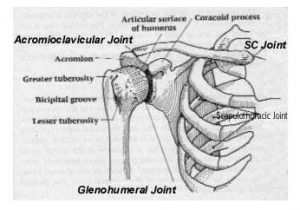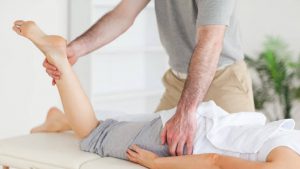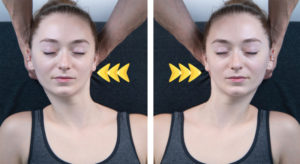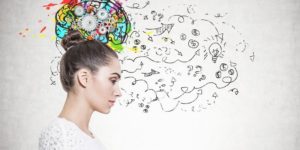In this “Memory & Bodywork Mastery” blog post: https://erikdalton.com/blog/cant-teach-experience/, I address some of the learning principles found in the following article by Daniel Hopkirk.

A Small Piece of Neuroscience to Change the Way You Learn
Intelligence is vital to modern society. Unlike our ancestors, our world values intellectual prowess far more than physiological capability and thus the need to acquire knowledge is now one of the utmost importance.
A basic understanding of some ways that our brain works can be incredibly useful for applying to our learning. Knowing how and when our brain works best and what can assist it could revolutionize one’s studying style.
A simple theory that can have practical applications to the learning approach is known as the ‘stages of learning.’
In 1967 Fitts and Posner published their psychological theory of the stages of learning. Within this they described that a person’s development of a motor skill is based around three distinct stages: cognitive, associative, and autonomous.
During the cognitive stage an individual will have limited understanding of what it is that they are trying to accomplish. This could be like a child being taught the rules of a running race and not understanding the direction and purpose of what they are doing.
After this stage the individual will progress to what is described as the associative stage. In this stage they understand what they are having to do and are trying to improve the way in which they do it, like a basketballer improving their free-throw technique.
Once they have refined this stage, they enter what is known as the autonomous stage. Here there is little left to improve upon and the knowledge is gained. One might have to maintain practice, however, as to not regress: ‘if you don’t use it, you lose it.’
So how does this apply to neuroscience?
Within the cognitive stage the actual physiological process the body is going through is finding the correct neural pathways — almost like finding the path through a maze. It does this more efficiently by basing it off of the knowledge of other pathways for similar things.
Once the correct neural pathway is found it is then repeatedly reused during the associative phase. This causes the neurons to myelinate. Myelination is the process of depositing myelin around the neurons which insulates them. The conduction of nerve impulses therefore becomes faster and more efficient as the impulse has less ability to ‘escape’ into other neurons or tissues.
When sufficiently myelinated the individual now experiences the autonomous stage. The need to maintain use of the neural pathways is there because without this the myelin is not redeposited and slowly ‘wears away.’
The understanding of this can have a colossal effect on the approach you have to your learning; utilizing the knowledge can make the process of education vastly more efficient.
So how does it apply to learning?
At the start of learning something a person is in the cognitive stage: trying to find the correct neurons to fire up.
With all the trial and error, one’s brain will be doing during this stage there are a lot of impulses and signals flying about. This means that the individual’s attentional capacity will be extremely hindered due to the vast proportion of uncontrollable neural activity. This is why a lot of people struggle to multitask and maintain conversation whilst learning new skills.
Because of this limited attentional capacity distractions should be cut out: music, changing environments, excessive or limited light and so on. This allows the brain to have as little else to process aside from finding the correct neural pathway and thus will do this quicker.
Another way to improve this speed is to be aware and stimulate the neural pathways of similar knowledge (which is why most curricula work in a spiral, revisiting previous knowledge in more depth year-on-year). This could mean re-reading similar pages of the textbook that one already knows or watching a quick YouTube recap video of a similar topic almost like a brain warm-up. It is also useful to make comparisons during the learning to assist this process.
When the correct pathway is found the associative stage is entered. Now the focus is to reinforce the neural pathway. For starters, it is important to have the right nutrition to deposit sufficient amounts of myelin. A key thing for this is the B group of vitamins so eating foods rich in these may improve the performance of the brain.
Repeated use of the pathway is what myelinates the neuron. Questions, tests, reading, and watching videos can all help to boost this. Furthermore, the larger variety of ways the neural pathway is used the more stimuli there become for it and the stronger the knowledge becomes. This can mean reading (using the optical cortex), listening (using the auditory cortex) and moving (using the somatosensory and motor cortices).
The provision of additional information to build on what is being learned can also help as it requires the neural pathways to be used once more along with others to increase the connections the pathway has.
Towards the end of the associative stage the attentional capacity needed for the learning and knowledge is reduced as the neural signal’s propagation is more direct. Consequently, more environmental ‘distractions’ can be brought in to reinforce the neural pathways as the brain has to maintain the conduction of the neurons whilst other signals are being passed around.
Once the individual makes virtually no mistakes (has the sense of truly knowing) they are now autonomous. This is where prolonged repetition and reuse comes in. Revisiting the neural pathways whenever possible keeps them myelinated and thus efficient conductors. Revision, practice questions or even discussion are all useful tools for this stage. This approach to learning can vastly improve the retention of knowledge and the intake of information.
By Daniel Hopkirk, 2020
On sale this week only!
Save 25% off the "Dalton Technique Treasures" eCourse
The “Dalton Technique Treasures” eLearning course is a compilation of some of Erik’s favorite Myoskeletal Alignment Techniques (MAT). Learn MAT techniques to assess and address specific sports injuries, structural misalignment, nervous system overload, and overuse conditions. ON SALE UNTIL July 29th! Get Lifetime Access: As in all our eLearning courses, you get easy access to the course online and there is no expiry date.








